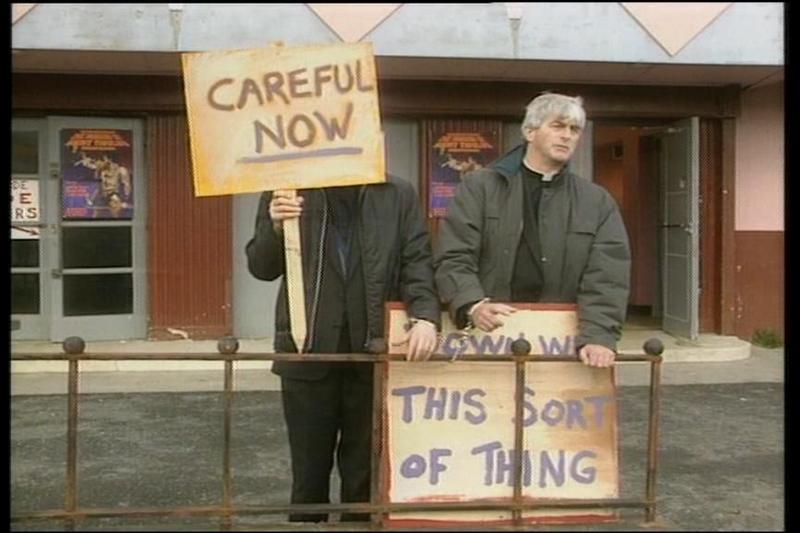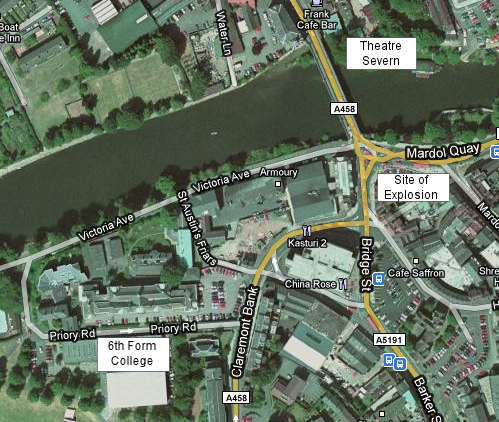I went to a public meeting last night at the Holiday Inn in Telford on the proposed changes to hospital services in Telford.
The main shocker of the night was that David Wright MP not only stayed after the photographers had left but what he said while he was in the meeting actually made sense.
 In Shropshire we have two main hospitals – the Royal Shrewsbury Hospital (RSH) and the Princess Royal Hospital (PRH) in Telford. In addition to the two general hospitals, there’s the specialist orthopædic hospital at Oswestry and a handful of cottage hospitals. The RSH and PRH are where all the main hospital services are – A&E, vascular, pædiatrics, maternity, etc.
In Shropshire we have two main hospitals – the Royal Shrewsbury Hospital (RSH) and the Princess Royal Hospital (PRH) in Telford. In addition to the two general hospitals, there’s the specialist orthopædic hospital at Oswestry and a handful of cottage hospitals. The RSH and PRH are where all the main hospital services are – A&E, vascular, pædiatrics, maternity, etc.
Shropshire is unusual in having two general hospitals, especially for the relatively small population of the county. We gave up 10 of our cottage hospitals to get a general hospital built in Telford so it came at a price. But now the hospitals are running out of money thanks to the British government’s cuts to the English NHS and services can’t be sustained at both hospitals.
A year ago there was a proposal to move services from the PRH to the RSH which were shelved because of the opposition. It wasn’t the first time moving services from Telford to Shrewsbury was suggested either – whenever money is tight the hospitals trust has always chosen a starting position of keeping all services in Shrewsbury. This time, however, the proposals are a little more balanced with some services moving from Shrewsbury to Telford and others moving from Telford to Shrewsbury.
If the proposals go ahead, consultant-led maternity services will be moved to Telford rather than Shrewsbury where they are currently provided. Consultant-led pædiatrics will also move to Telford, reflecting the fact that there are far more children in Telford than Shrewsbury and more social deprivation which leads to poor health in children. Acute surgery will move to Shrewsbury and both hospitals will retain A&E services.
The hospital at Telford is a much newer building than Shrewsbury and there is a lot more room for expansion at the Telford site. The RSH was built in the 60’s and parts of the building are structurally unsound according to a report that the hospitals trust have just released. The report dates from 2007 so cynical types might wonder why the report has only just been released when it backs up their proposals and why the imminent condemnation of parts of the RSH wasn’t a problem a year ago when they wanted to consolidate services in Shrewsbury. But that doesn’t change the fact that the RSH is structurally unsound in places and there is no money to fix it up (especially not after Gordon Brown took £1bn out of the English NHS’ building fund as one of his final acts as Chancellor).
Telford has the largest population in Shropshire by a considerable margin and the fastest growing population too. It makes sense to put services where they will be most used and that’s at Telford, especially in the case of maternity and pædiatrics.
The four consultations being held in Shropshire are finished now and the next three are being held in Mid-Wales. The RSH – and to a lesser extent, the PRH – provide services to patients from Powys where there is no general hospital. Some of the services the hospitals in Shropshire provide are only sustainable because Powys is in their catchment area and Powys health board pays for patients that are treated in Shropshire but I don’t agree that this entitles people in Powys to a say in how our hospitals are configured.
People in Shrewsbury seem to have latched onto the extra 18 miles Welsh people will have to travel for some services as an argument for keeping all services in Shrewsbury. From what people who have been to the other public meetings have said, there seems to be an attitude in Shrewsbury that they have an entitlement to keep all services in the town and that any cuts should be made to the PRH which they see as a subordinate hospital to the RSH rather than one half of the same service. In fact, one very brave man from Shrewsbury announced to the 200 or so people in the room that everything should be moved to Shrewsbury because it’s the county town. He did make it out in one piece but that’s possibly more to do with the fact he made a sharp exit than the restraint of the people in the room!
I asked a question around the contribution to the running costs of the hospitals from Powys health board. Whilst the health board pays for treatment of one of their patients, the hospitals cost money whether they’re used or not – how much is Powys health board contributing to the running costs of the hospitals and the reconfiguration of services? The answer I got from the CEO is that they’re not contributing to the reconfiguration of services but they provide approximately 10% of patients and about 10% of the hospital trust’s income. What he didn’t mention, though, was that the patients that come to Shrewsbury do so because their treatment is something that can’t be done in a cottage hospital or GP’s surgery – in other words, they are the expensive treatments. The current CEO’s predecessor told the Shropshire Star that treating Welsh patients costs the hospitals £2m per year because Powys health board doesn’t pay the going rate for treatment so unless something has changed since 2008, he misled the meeting last night.
The question that got the loudest applause was when one lady – a former nurse – stood up and asked why we are taking Mid-Wales into account when they get a lot more money than we do in England.
Outside the meeting a group of communists were handing out “no more cuts” trades union propaganda. I handed mine back and reminded them we don’t have any money. The man walking past me at the time was slightly less polite to them.
In an ideal world we would retain a full range of services at both hospitals but there isn’t enough money to pay for them so until the Brits stop using our money to subsidise the celts, we have to accept that there will be cutbacks to our services in England and this proposal – despite being far from ideal – is the best solution for the whole county.





